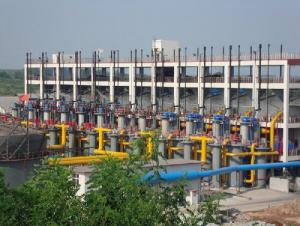Loading Port:Shanghai
Payment Terms:TT OR LC
Min Order Qty:1 unit
Supply Capability:1 unit/month
Forklifts are rated for loads at a specified maximum weight and a specified forward center of gravity. This information is located on a nameplate provided by the manufacturer, and loads must not exceed these specifications. In many jurisdictions it is illegal to remove or tamper with the nameplate without the permission of the forklift manufacturer.
An important aspect of forklift operation is that most have rear-wheel steering. While this increases maneuverability in tight cornering situations, it differs from a driver’s traditional experience with other wheeled vehicles. While steering, as there is no caster action, it is unnecessary to apply steering force to maintain a constant rate of turn.
Another critical characteristic of the forklift is its instability. The forklift and load must be considered a unit with a continually varying center of gravity with every movement of the load. A forklift must never negotiate a turn at speed with a raised load, where centrifugal and gravitational forces may combine to cause a disastrous tip-over accident. The forklift are designed with a load limit for the forks which is decreased with fork elevation and undercutting of the load (i.e., when a load does not butt against the fork "L"). A loading plate for loading reference is usually located on the forklift. A forklift should not be used as a personnel lift without the fitting of specific safety equipment, such as a "cherry picker" or "cage".
Forklifts are a critical element of warehouses and distribution centers. It’s imperative that these structures be designed to accommodate their efficient and safe movement. In the case of Drive-In/Drive-Thru Racking, a forklift needs to travel inside a storage bay that is multiple pallet positions deep to place or retrieve a pallet. Often, forklift drivers are guided into the bay through guide rails on the floor and the pallet is placed on cantilevered arms or rails. These maneuvers require well-trained operators. Since every pallet requires the truck to enter the storage structure, damage is more common than with other types of storage. In designing a drive-in system, dimensions of the fork truck, including overall width and mast width, must be carefully considered.
Forklift control and capabilities[edit]Forklift hydraulics are controlled with either levers directly manipulating the hydraulic valves, or by electrically controlled actuators, using smaller "finger" levers for control. The latter allows forklift designers more freedom in ergonomical design.
Hydraulic elevator for tractorsForklift trucks are available in many variations and load capacities. In a typical warehouse setting most forklifts have load capacities between one and five tons. Larger machines, up to 50 tons lift capacity, are used for lifting heavier loads, including loaded shipping containers.
In addition to a control to raise and lower the forks (also known as blades or tines), the operator can tilt the mast to compensate for a load's tendency to angle the blades toward the ground and risk slipping off the forks. Tilt also provides a limited ability to operate on non-level ground. Skilled forklift operators annually compete in obstacle and timed challenges at regional forklift rodeos.



